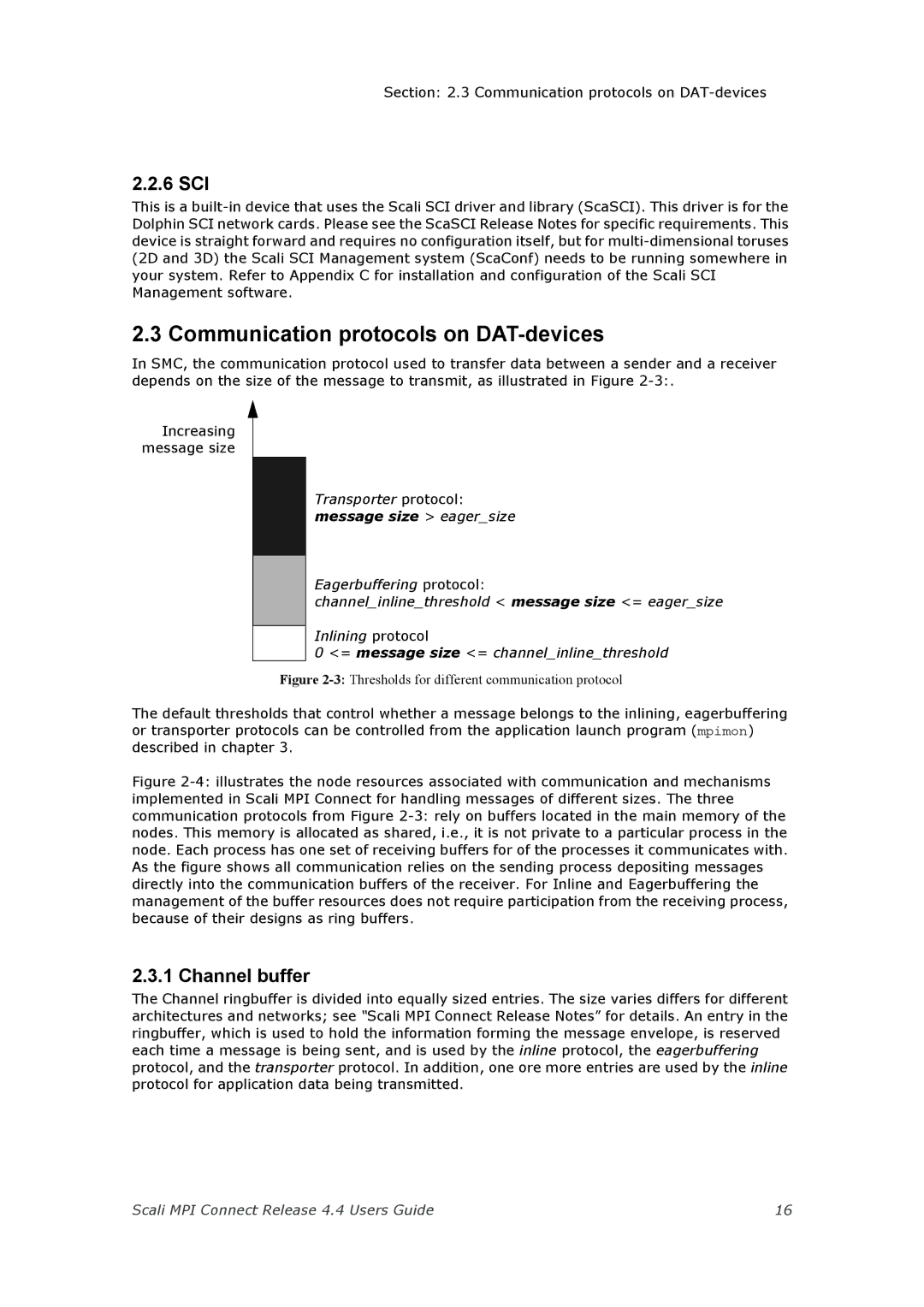
Section: 2.3 Communication protocols on
2.2.6 SCI
This is a
2.3 Communication protocols on DAT-devices
In SMC, the communication protocol used to transfer data between a sender and a receiver depends on the size of the message to transmit, as illustrated in Figure
Increasing message size
Transporter protocol: message size > eager_size
Eagerbuffering protocol:
channel_inline_threshold < message size <= eager_size
Inlining protocol
0 <= message size <= channel_inline_threshold
Figure 2-3: Thresholds for different communication protocol
The default thresholds that control whether a message belongs to the inlining, eagerbuffering or transporter protocols can be controlled from the application launch program (mpimon) described in chapter 3.
Figure 2-4: illustrates the node resources associated with communication and mechanisms implemented in Scali MPI Connect for handling messages of different sizes. The three communication protocols from Figure 2-3: rely on buffers located in the main memory of the nodes. This memory is allocated as shared, i.e., it is not private to a particular process in the node. Each process has one set of receiving buffers for of the processes it communicates with. As the figure shows all communication relies on the sending process depositing messages directly into the communication buffers of the receiver. For Inline and Eagerbuffering the management of the buffer resources does not require participation from the receiving process, because of their designs as ring buffers.
2.3.1 Channel buffer
The Channel ringbuffer is divided into equally sized entries. The size varies differs for different architectures and networks; see “Scali MPI Connect Release Notes” for details. An entry in the ringbuffer, which is used to hold the information forming the message envelope, is reserved each time a message is being sent, and is used by the inline protocol, the eagerbuffering protocol, and the transporter protocol. In addition, one ore more entries are used by the inline protocol for application data being transmitted.
Scali MPI Connect Release 4.4 Users Guide | 16 |
